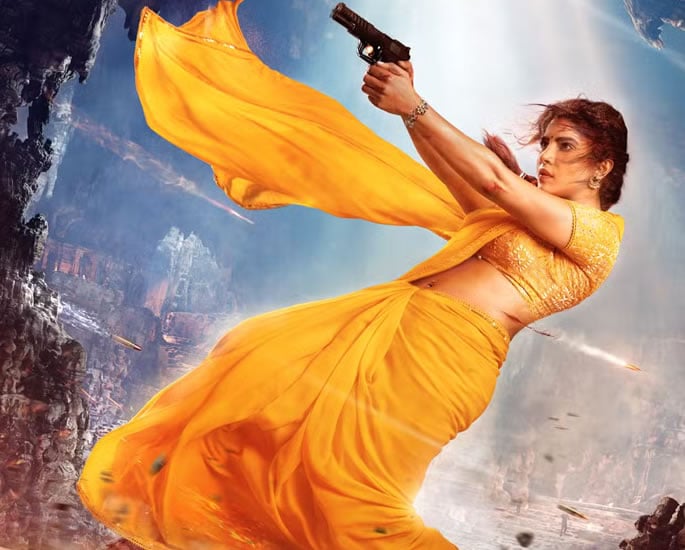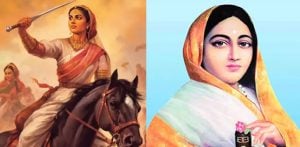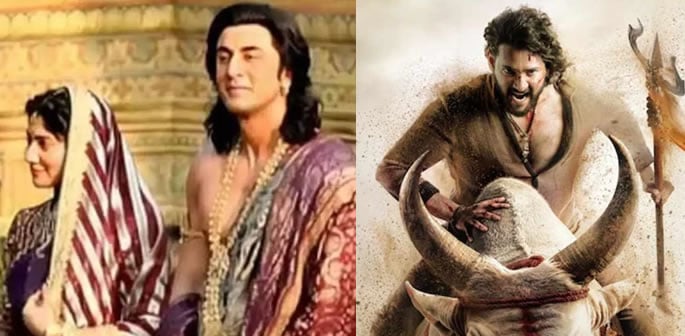"It should speak to you like any other film.”
The anticipation around Ramayana and Varanasi is palpable.
Two films, both rooted in Indian mythology, are gearing up to redefine the scale and ambition of Indian cinema.
While Ramayana, directed by Nitish Tiwari, promises a faithful retelling of the Hindu epic, SS Rajamouli’s Varanasi takes a bold narrative turn, blending mythology with time travel and fantasy.
Both films boast stellar casts, cutting-edge visual effects, and release plans that have already sparked intense discussion among cinephiles.
As audiences eagerly await their premieres, comparisons are inevitable.
We delve into what makes these films unique, their similarities, differences, and what viewers can expect.
Mythology on Screen

Indian cinema has long drawn inspiration from mythology.
The epics of Ramayana and Mahabharata, along with folklore collections like Amar Chitra Katha, have been a source of storytelling for generations.
However, recent decades have witnessed a technological revolution that has elevated these stories into visual spectacles.
SS Rajamouli demonstrated this with the Baahubali franchise, creating global excitement for mythological narratives presented on a cinematic scale.
Ramayana adheres to a traditional interpretation of Valmiki’s epic.
Nitish Tiwari, known for films like Dangal and Chhichhore, has approached the project with meticulous attention to detail, spending 10 years on scripting, dialogue, and screenplay development.
The film stars Ranbir Kapoor as Lord Ram, Sai Pallavi as Sita, and Yash as Raavan, with supporting roles played by Amitabh Bachchan, Sunny Deol, Lara Dutta, and Arun Govil.
The ambition is clear: create a cinematic retelling that resonates with both Indian and global audiences.
By contrast, Varanasi represents an evolution of mythology in Indian cinema.
Rajamouli, who transformed Indian film with RRR and Baahubali, merges mythological elements with science fiction.
While only a few details about the plot are confirmed, the film incorporates multiple timelines, time travel, and elements of both Kali Yug and Treta Yug.
The cast includes Priyanka Chopra as Mandakini, Mahesh Babu as Rudhra, and Prithviraj Sukumaran as the antagonist Kumbha.
Rajamouli’s approach suggests a layered narrative, blending visual grandeur with conceptual experimentation.
Scale, Visuals and Production

When it comes to sheer scale, both films are pushing the boundaries of Indian cinema.
Ramayana is being produced with a reported budget of £375 million, making it the most expensive Indian film ever.
The film is intended for a global audience, with producer Namit Malhotra comparing its ambition to James Cameron’s Avatar and Ridley Scott’s Gladiator.
Malhotra stated: “It’s a global film from the day we start… If you go and watch Ramayana and your family watches it, and people in India watch it, what’s the difference?
“It should speak to you like any other film.”
Visual effects will play a central role in both projects.
Varanasi has already revealed glimpses of its intricate VFX in an unveiling event. Rajamouli’s nearly four-minute teaser showcased the film’s time-travel concept, with action sequences featuring Mahesh Babu riding a white bull, wielding a trident and Priyanka Chopra balancing on a cliff with a pistol.
The level of detailing in set design and CGI suggests that Varanasi will offer a cinematic spectacle on par with international fantasy films, with IMAX screenings confirmed.
Ramayana, while also grand, leans more on faithful recreations of the epic’s environments and costumes. The film combines large-scale battle sequences with intimate storytelling moments, aiming to balance spectacle with emotional depth.
Tiwari explained:
“Emotions are universal. If the audience connects with you emotionally, I think they will connect with the whole story.
“Emotions have powers to travel across boundaries.”
The production team’s meticulous work on pre-production and casting underscores a commitment to authenticity and resonance.
Cast and Characters

Casting choices have already generated significant excitement.
Ramayana’s lead and supporting cast are among the most celebrated actors in Indian cinema.
Ranbir Kapoor’s portrayal of Lord Ram is expected to bring a nuanced blend of strength and compassion. Sai Pallavi’s Sita promises a grounded yet resilient interpretation, while Yash as Raavan introduces a layered antagonist.
Sunny Deol will embody Lord Hanuman, and veteran actors like Amitabh Bachchan, Lara Dutta, and Sheeba Chaddha further anchor the narrative in cinematic gravitas.
Varanasi takes a different approach, casting actors known for both their action chops and international presence.
Priyanka Chopra, returning to Indian cinema, plays Mandakini, a character already generating intrigue for her mix of elegance and lethal precision.
Mahesh Babu’s Rudhra is depicted as a fierce warrior, while Prithviraj Sukumaran’s Kumbha provides a formidable antagonist.
Rajamouli’s casting choices reflect his intent to blend star power with physicality, ensuring that the epic battles and mythic storytelling have a human anchor.
Babu described the project as “a once-in-a-lifetime project… The whole of India will be proud of us.”
While Ramayana leans on recognition and reverence for iconic characters, Varanasi emphasises dynamic reinterpretations, merging mythic archetypes with action-hero sensibilities.
Both strategies highlight the importance of performance in translating mythology to the screen.
Themes and Narrative Approach

The narrative contrast between the two films is striking.
Ramayana is a direct adaptation, grounded in the epic’s moral and spiritual themes. It promises a linear story across two parts, with Part 1 scheduled for Diwali 2026 and Part 2 for Diwali 2027.
The story’s focus remains on dharma, devotion, and the hero’s journey, with Tiwari emphasising its universal emotional appeal.
Kunal Kapoor, playing Lord Indra, said: “This is a very important film in our cultural history… It is mounted at a scale that we’ve never seen before. It will be very special.”
Varanasi, on the other hand, ventures into speculative territory.
By blending time travel with mythological narratives, Rajamouli introduces non-linear storytelling, weaving fantasy, action, and philosophical reflections on time and destiny.
The film reportedly connects events from Treta Yug and Kali Yug, offering a reinterpretation of epic motifs in a contemporary cinematic framework.
While fewer plot details are confirmed, the teaser hints at a layered, visually driven experience that challenges conventional narrative structures.
Both films engage with mythology, but they do so in contrasting ways.
Ramayana seeks fidelity and universality, aiming to resonate emotionally with global audiences through a traditional lens. Varanasi experiments with form and spectacle, promising an immersive, multidimensional cinematic adventure.
Audiences may find themselves comparing the emotional gravity of Ramayana with the imaginative daring of Varanasi, highlighting different facets of Indian storytelling.
Both Ramayana and Varanasi represent significant milestones for Indian cinema.
Ramayana offers a faithful, emotionally rich retelling of one of India’s most cherished epics, anchored by a stellar cast and meticulous production.
Varanasi, meanwhile, promises innovation, spectacle, and an ambitious blending of mythology and fantasy.
When it comes to audiences, those drawn to reverence, narrative depth, and a classical approach will find Ramayana compelling.
On the other hand, those seeking visual grandeur, inventive storytelling, and a blend of myth with modern cinematic techniques will likely gravitate towards Varanasi.
But both films underscore the continuing evolution of Indian cinema, proving that mythology remains a potent source for stories that can resonate globally.
With Ramayana set for Diwali 2026 and 2027 releases, and Varanasi scheduled for 2027, the next few years promise a cinematic clash of epic proportions.
The stage is set, the visuals are breathtaking, and the anticipation is unprecedented. Indian mythology has never looked this grand or imaginative on screen.






























































